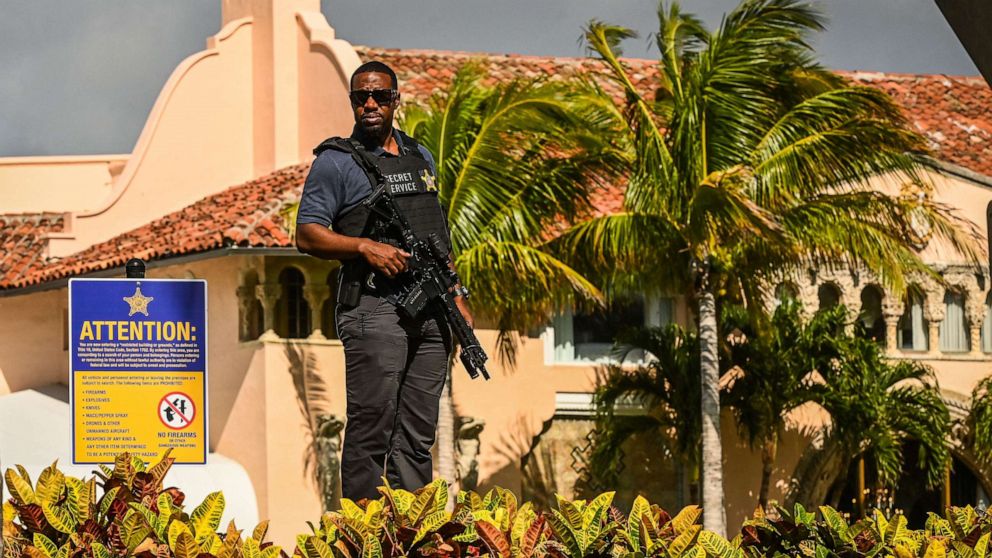前总统唐纳德·特朗普的控告这在纽约是历史性的:前总统从未因被指控的罪行而被起诉。
最接近的可能是前总统理查德·尼克松,他因在20世纪70年代水门事件中扮演的角色,即将被联邦大陪审团以四项刑事罪名起诉。他的辞职和杰拉尔德·福特总统的赦免使尼克松和整个国家免受潜在的联邦总统刑事审判。
现在特朗普被曼哈顿的一个大陪审团指控犯有34项重罪所谓的阴谋在2016年大选前捕捉和扼杀诋毁性的故事,引发了许多问题,包括特勤局保护的作用和范围,包括如果他被定罪和监禁,保护范围是否会扩大到他。
特朗普已经提出无罪抗辩,他和他的法律团队强烈否认这些指控。
1901年,亚伯拉罕·林肯、詹姆斯·a·加菲尔德和威廉·麦金利三位总统被暗杀后,特勤局开始保护总统。前总统在1958年左右开始受到保护前总统法案该法案授权终身保护不是仅仅根据《宪法》第二条被免职的美国前总统。
当时有两位健在的前总统:赫伯特·胡佛和哈里·S·杜鲁门。但第一个获得这一好处的是德怀特·戴维·艾森豪威尔总统,一位前二战将军,他领导盟军打败了轴心国。
特勤局保护的基础是“基于威胁”,大多数现任和前任总统在办公室内外都会收到成千上万的威胁。
下面的18 USC 3056,美国特勤局联邦法律授权为现任总统及其家人、副总统及其家人以及包括前总统和第一夫人及其16岁以下子女在内的其他人提供终身保护,除非配偶再婚,否则保护将终止。
虽然法律很明确,但有些已经合并特勤局的保护任务是对个人的某种忠诚。其他人曲解了特勤局在代表受保护人提出请求时实施保护方法可能采取的步骤。特勤局的角色也不明确,法律和任务也很明确——提供保护是唯一的重点。
然而,国会多年来已经修改了关于保护的法律,特别是针对前总统的法律。1994年,一项法律改革将1997年1月1日之后就职的总统的后总统保护限制在10年内,该法律由时任总统比尔·克林顿签署成为法律。这意味着克林顿之后的任何一位总统都只能获得10年的保护。
2013年1月10日,巴拉克·奥巴马总统签署了2012年前总统保护法该法案恢复了特勤局对前总统乔治·w·布什的终身保护,在911事件后,他受到了无数的恐怖主义威胁。下令打击奥萨马·本·拉登的奥巴马也收到了威胁。他们和所有后来的总统都将获得终身保护。

2023年4月1日,一名特工站在佛罗里达州棕榈滩美国前总统唐纳德·特朗普的家Mar-a-Lago俱乐部外。
乔治·维耶拉/法新社
根据法律,只有现任总统、副总统、当选总统和当选副总统不能拒绝保护。名单上的其他人,包括前总统,都可以拒绝保护,如果他们愿意的话。正如所写的那样,除了死亡或前第一夫人再婚之外,雕像中没有任何内容迫使接受特勤局保护的人在任何情况下失去这种保护。
因此,如果一位前总统入狱,保护措施将如何发挥作用的问题有了明确的答案。
简单地说,法律要求它,特勤局必须提供保护,即使是在监狱里,因为只有被保护人可以结束它。
国会可以修改法律,但历史上,唯一一位由特勤局保护的前总统是前总统尼克松,他于1974年离开白宫结束了对他的保护1985年。
Trump's indictment won't end his Secret Service protection -- he'd have to decline it: ANALYSIS
Former President Donald Trump’sindictmentin New York is historic: never before has a former president been indicted for an alleged crime.
The closest would have been former President Richard Nixon, who was on the cusp of being indicted by a federal grand jury on four criminal counts for his role in the 1970s Watergate scandal. His resignation and pardon by President Gerald Ford spared both Nixon and the nation from enduring a potential criminal federal presidential trial.
Now Trump’s indictment by a grand jury in Manhattan on 34 felonies pertaining to analleged schemeto catch and kill disparaging stories ahead of the 2016 election has opened up many questions including the role and scope of Secret Service protection, including whether it would extend to him if he were convicted and incarcerated.
Trump has entered a not guilty plea and he and his legal team have vehemently denied the allegations.
Protection of the president by the Secret Service began in 1901 after three presidents -- Abraham Lincoln, James A. Garfield and William McKinley -- were assassinated. Former presidents began receiving protection around 1958 under theFormer Presidents Act, which mandated lifetime protection of former presidents of the United States who have not been removed from office solely pursuant to Article II of the Constitution.
At the time there were two living former presidents: Herbert Hoover and Harry S. Truman. But it was President Dwight D. Eisenhower, a former World War II general who led the Allies effort to beat the Axis powers, who was the first to receive this benefit.
The basis of Secret Service protection is “threat-based” and most current and former presidents receive thousands of threats while in and outside of office.
Under18 USC 3056, the United StatesSecret Serviceis mandated by federal law to provide protection for the sitting president and their family, the vice president and their family, as well as a list of others including former president’s and first ladies and their children under 16 “for their lifetimes, except that protection of a spouse shall terminate in the event of remarriage.”
Although the law is clear, somehave conflatedthe Secret Service protective mission with some type of an allegiance to an individual. Othershave misinterpretedthat steps the Secret Service may take to implement their protective methodology as making requests on behalf of a protected person. Neither is the Secret Service's role and the law and mission are clear -- to provide protection as a singular focus.
Congress, however, has changed the law regarding protection over the years and specifically for former presidents. In 1994, a legal change limited post-presidential protection to 10 years for presidents inaugurated after Jan. 1, 1997, which was signed into law by then President Bill Clinton. This meant that any president after Clinton would only receive protection for 10 years.
On Jan. 10, 2013, President Barack Obama signed theFormer Presidents Protection Act of 2012which reinstated lifetime Secret Service protection for former President George W. Bush, who had a myriad of terrorist threats aimed at him post 9/11. Obama, who had ordered the mission against Osama Bin Laden, had also received threats. They and all subsequent presidents would get lifetime protection.
By law, only the sitting president, vice president, president-elect and vice president-elect cannot decline protection. Everyone else on the list, including former presidents are able to decline protection, if they choose to do so. Nothing in the statue, as written, forces someone who receives Secret Service protection to lose that protection under any circumstance other than death or, in the case of a former first lady, remarriage.
As such, the question about how protection would work if a former President were to go to jail has a clear answer.
Simply, the law mandates it and the Secret Service would have to provide protection, even in jail, as only the protectee may end it.
Congress could change the law but, historically, the only ex-president with Secret Service protection to ever end it was former President Nixon, who left the White House in 1974 andended his protectionin 1985.






